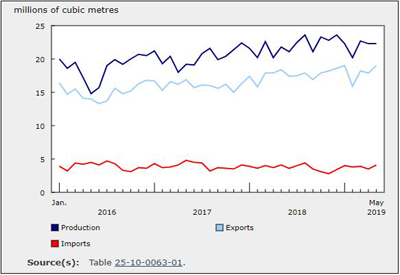Greener Electrified Canada

November 1, 2023
By Carol McGlogan
There isn’t a more important time to be in the electrical industry than ‘right now’. Canada’s signing of the Paris agreement, means that we need to reduce GHG emissions by 40 – 45% below 2005 levels by 2030 and reach Net 0 by 2050. The target is aggressive, and outside of the oil and gas sector; transportation, buildings, and heavy industry are the next 3 big emitters. Looking at emissions from an energy supply and demand perspective; 35% of emissions come from energy supply and 65% from energy demand.
Our industry plays a critical role in energy supply, providing the technology and intelligence for a robust and modernized electrical grid. On the demand side, we have solutions to improve building and manufacturing efficiencies.
According to the Pembina Group*, $80 billion dollars of annual spending will be required from public and private sources to decarbonize Canada. We are currently spending $15B annually.
On the transportation side, to meet the forecasted EV adoption in Canada, Pembina estimates that 800,000 public charging stations will be required for light duty vehicles and 40,000 public stations for medium and heavy-duty vehicles. To accommodate this build out, a national infrastructure deployment plan must be aligned with EV targets.
The biggest opportunity for buildings is heat electrification. 78% of Canada’s building emissions come from space and water heating equipment. There are over 16 million dwellings and 482,000 commercial and public buildings in use in Canada. Heat electrification will amplify grid capacity issues, emphasizing the need to adopt energy saving technologies like lighting and controls. Pembina estimates that 5x the current retrofit pace is needed to reach 2050 goals and the retrofit opportunity is $400B dollars between now and 2040 for the residential and commercial markets.
To support the electrification of transport and buildings, significant physical electric infrastructure upgrades will be required. At the same time, the source of energy for electricity must be clean. With 80% of Canada’s grid being supplied by clean energy sources, we have one of the cleanest electrical grids in the world. According to Canada’s Energy Regulator it is estimated that the installed capacity of the electrical grid will almost double by 2050.
At the same time, Canada strives to have 90% of its electricity by non-emitting sources by 2030. The 3 key aspects to reach Canada’s electricity goals are: expanded distributed energy resources and demand side management, clean energy supply with rapid deployment of renewables and storage, and the upgrade of transmission and distribution system networks.
Our members at EFC are ready to assist governments and businesses with this Net 0 challenge. To do this, we are gathering a group of experts who can develop industry positions on application and policy recommendations. We want to be the source of technical and application expertise when it comes to: grid modernization, building efficiencies and EV infrastructure support. This is where ‘Greener Electrified Canada’ comes into play. Under the three pillars of: Grid, Buildings, and EV Infrastructure, these separate groups will identify the barriers, opportunities, strategies, and incentives required to reduce energy demand and improve electricity supply.
If you are a member of EFC and have expertise in any of these areas, please reach out to Gurvinder Chopra at gchopra@electrofed.com to join Greener Electrified Canada.
*Decarbonizing Canada via ‘Electrification’ by Pembina Institute https://www.electrofed.com/market-resources/industry-research/

Carol McGlogan | President & CEO











